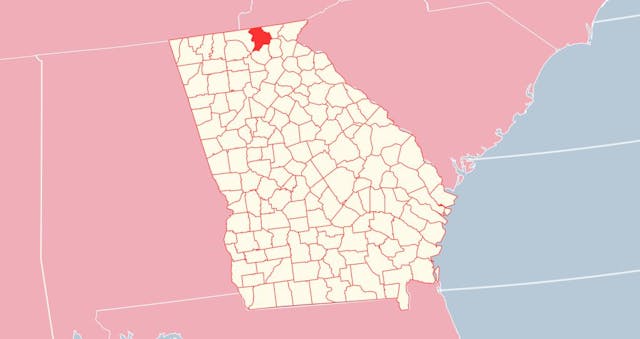Rehabs in Union
Union County was founded on December 3, 1832, in Georgia, US. According to the data, the population was 24,960, registering a 1.33% growth from 2020. Blairsville city is its seat.
This province is one of the top 20 healthiest regions in GA. Leading specialists improved the healthcare system in all areas. Compared to the other counties, Union has also a low rate of substance abuse. Alcohol-related driving deaths fell from 13% in 2018 to 5% in 2021. Deaths from overdoses of drugs dropped from 16 in 2018 to 15 in 2021.
Yet the Union County rehabs continue to operate to their fullest to prevent any decrease and help the addicts out.
Drug and Alcohol Evaluation
Whenever an addict decides on rehab care, the first step to take will be a drug and alcohol use evaluation. At first, patients should complete some paperwork questionnaire. Then a medical specialist will discuss with them to clarify some issues.
Next, clients pass a physical assessment to determine general health. It helps to identify the impact of dependence on the body of visitors.
Besides, passing the drug screen will show that the client is in the proper withdrawal stage to start the cure. Height and weight are also included in the general check. It helps doctors prescribe the correct medicine dosage for the patient.
Last, people will have consultations with consultants to verify their history of addiction to substances. The specialist should know whether patients use multiple chemicals or have mental illnesses besides addiction.
This process requires clients to be honest and speak about their dependence in a frank manner. Otherwise, it will be challenging to clarify issues. It is not excluded that clients can take a rapid blood test in some cases.
Depending on the results, doctors refer patients to the right treatment program and tailor methods to their specific needs.
Treatment Programs in Union County
Rehabs in Union County offer both residential and outpatient care. Some of them are primary care centers. Others are specialized in opioid treatment. They all provide comprehensive methods. Consequently, no one remains without healing.
Detox
After the evaluation, the next step is to clean the body of chemicals. For that reason, detox takes place under certain medicines to escape physical and mental drawbacks. Medical centers have different timelines for this process. The minimum time is five days. It may last up to 10 days.
Inpatient Program(IP)
As the highest degree of care, IP serves people with complicated cases. This residential cure includes more severe cases such as co-occurring and long time abusing opioids. Therefore, it requires 24/7 monitoring. The healing methods target the physical, emotional, and psychiatric needs of clients.
Outpatient (OP)
OP is open to those who are less dependent on substances. These people have either finished the residential level or abused alcohol or soft drugs several times. They attend group and individual counseling services three days weekly. They learn self-help skills for recovery.
Partial Hospitalization Program(PHP)
Patients who can care about themselves or have support at home may choose PHP instead of intensive one. They participate in daily meetings, group sessions, and education to learn how to manage their emotions and get life skills.
Payment Options Without Insurance
Treatment expenses might be decreased by insurance. However, clinics offer other options if anyone does not have the proper coverage or cannot pay out-of-pocket. Those include Medicaid, sliding fee scale, and various financial help. When choosing a rehab, it is recommended to check the eligibility of these payment methods.
Forcing Teens Into Rehabilitation
Despite the low rate of dependency, the biggest issue residents are facing today is still the high rate of teen substance abuse. Thus, nearly all recovery centers in this Union offer comprehensive programs for teens as well. The law, on its side, enables the parents or legal guardians to compel the minors into rehabilitation.

